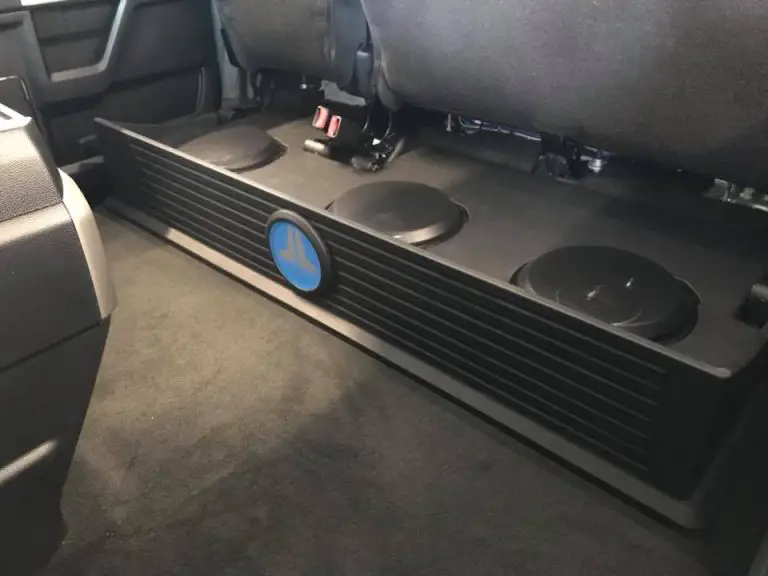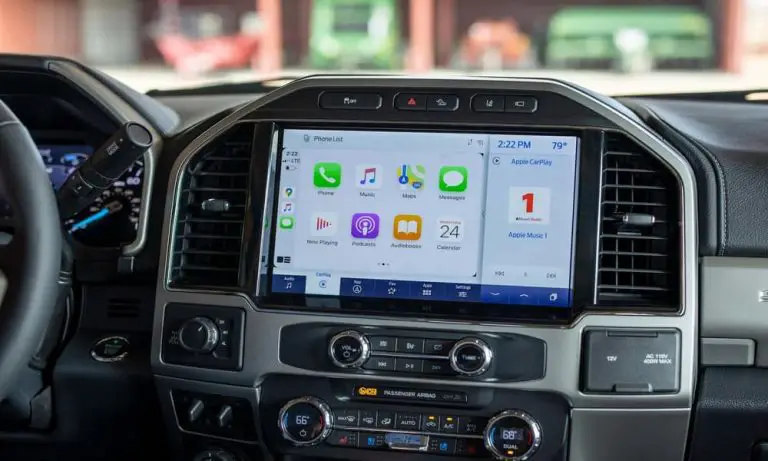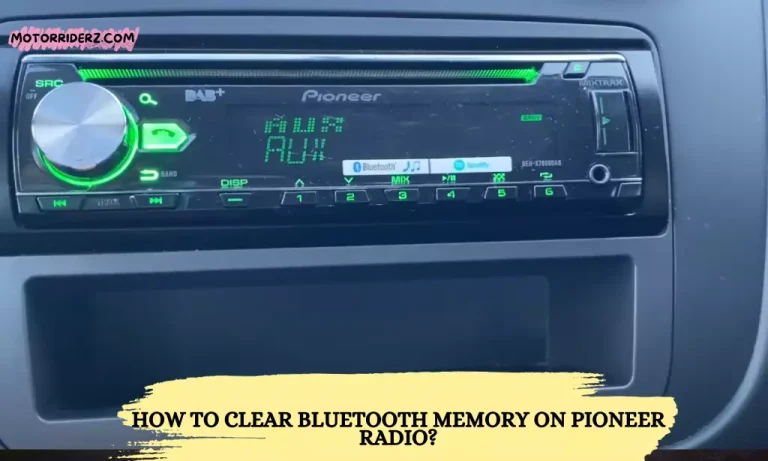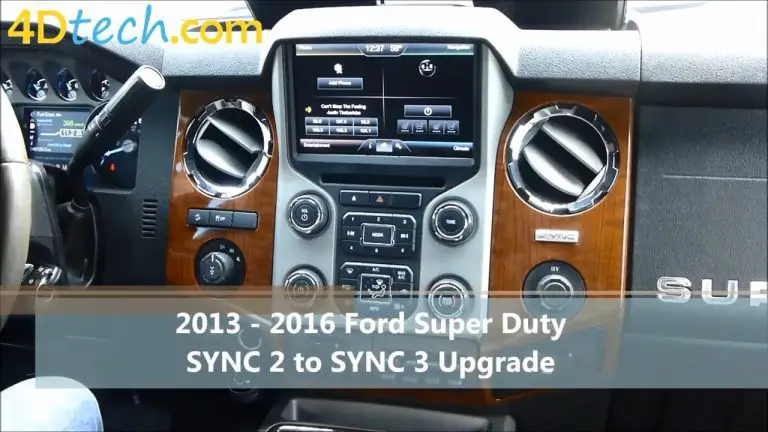Symptoms To Detect A Bad Ignition Coil On Jeep 4.0 (Details Guide)
We will focus on a common issue that Jeep 4.0 engine owners may encounter: a bad ignition coil. Ignition coils play a vital role in the efficient functioning of the ignition system, which is crucial for engine performance and power.
If you own a Jeep with a 4.0 engine and are experiencing unusual engine behavior, such as misfires, rough idling, or decreased fuel efficiency, a faulty ignition coil could be the culprit. Identifying the symptoms of a bad ignition coil is essential for timely diagnosis and repair, preventing further damage and ensuring your Jeep runs smoothly on the road or trails.
In this article, we will explore the telltale signs of a bad ignition coil on Jeep 4.0 engines. We’ll discuss common symptoms that may indicate coil failure, the potential causes behind it, and the necessary steps to diagnose and address the issue. Whether you’re a DIY enthusiast or prefer professional assistance, we’ll provide you with the knowledge to make informed decisions regarding replacement options and preventive maintenance.
Understanding the symptoms of a bad ignition coil and taking appropriate action can help restore your Jeep’s performance and avoid potential breakdowns. Join us as we guide you through the world of ignition coil troubleshooting and empower you to keep your Jeep 4.0 engine running smoothly for years to come. Let’s dive in and unravel the mysteries behind a bad ignition coil on a Jeep 4.0 engine.
What is an Ignition Coil?
An ignition coil is a crucial component of the ignition system in an internal combustion engine. Its primary function is to transform the low-voltage electrical energy from the battery into high-voltage energy required to create a spark at the spark plugs. This spark ignites the air-fuel mixture in the engine’s combustion chamber, resulting in the combustion process that powers the engine.
The ignition coil operates on the principle of electromagnetic induction. It consists of two primary windings: a primary coil with relatively fewer turns of thick wire and a secondary coil with many more turns of thinner wire. These windings are wrapped around a core made of iron or magnetic material.
When the ignition switch is turned on, a low-voltage current from the battery flows through the primary winding of the ignition coil. This current creates a magnetic field around the core. When the current is interrupted by the ignition control module or ignition points (in older systems), the magnetic field collapses rapidly. This rapid collapse of the magnetic field induces a high voltage in the secondary winding of the ignition coil.
The high-voltage output from the secondary winding is then sent to the distributor or directly to the spark plugs through individual coil-on-plug (COP) systems. At the spark plug, the high voltage jumps the gap and generates a spark, igniting the air-fuel mixture in the combustion chamber.
The ignition coil serves as a transformer that converts the low-voltage electrical energy from the battery into high-voltage energy necessary to create a spark at the spark plugs. It plays a crucial role in the ignition system, ensuring reliable ignition and efficient combustion within the engine.
Symptoms of a Bad Ignition Coil on Jeep 4.0 Engines
When an ignition coil starts to fail on a Jeep 4.0 engine, several symptoms may arise, indicating a potential issue with the coil. Recognizing these symptoms is important for timely diagnosis and repair. Here are some common signs that may indicate a bad ignition coil on a Jeep 4.0 engine:
1. Misfire and Rough Idle: A failing ignition coil can lead to misfires, causing the engine to run unevenly and produce a noticeable vibration. You may experience a rough idle, where the engine feels shaky or unstable when at a standstill.
2. Engine Stalling or Difficulty Starting: A faulty ignition coil can disrupt the ignition process, resulting in engine stalling or difficulty starting. You may find that the engine cranks for longer than usual before starting or fails to start altogether.
3. Decreased Fuel Efficiency: When an ignition coil is malfunctioning, it can negatively impact the combustion process, leading to decreased fuel efficiency. You may notice a drop in mileage or the need to refuel more frequently.
4. Loss of Power and Acceleration: A failing ignition coil can cause a loss of power and sluggish acceleration. The engine may feel less responsive, struggling to reach higher speeds or maintain consistent power during acceleration.
5. Check Engine Light (CEL) Illumination: A bad ignition coil can trigger the vehicle’s onboard diagnostic system to detect a problem and activate the Check Engine Light (CEL) on the instrument panel. The CEL serves as a warning indicator that there is an issue with the engine’s performance or emissions.
6. Diagnostic Trouble Codes (DTCs) Related to Ignition System: When a problem occurs with the ignition coil, it may generate specific Diagnostic Trouble Codes (DTCs) related to the ignition system. These codes can be retrieved using a diagnostic scanner or code reader to pinpoint the source of the problem.
Causes of Ignition Coil Failure
Ignition coil failure can occur due to various factors, and understanding the potential causes can help in preventing future issues. Here are some common causes of ignition coil failure:
1. Age and Wear
Ignition coils, like any other component, can deteriorate over time. As the coil ages, its internal components may weaken or degrade, leading to diminished performance and eventual failure. Regular wear and tear can contribute to coil breakdown.
2. Heat and Temperature Extremes
The ignition coil is exposed to high temperatures within the engine compartment. Over time, the constant exposure to heat can cause the coil’s insulation to deteriorate, leading to internal short circuits or coil winding damage. Extreme temperature fluctuations can also stress the coil, potentially leading to failure.
3. Electrical Overload or Voltage Spikes
Fluctuations in the electrical system, such as voltage spikes or excessive current flow, can place additional stress on the ignition coil. This can lead to insulation breakdown, overheating, or internal component failure. Faulty wiring, loose connections, or problems with other ignition system components can contribute to electrical overload.
4. Contamination and Corrosion
Moisture, dirt, oil, or other contaminants can infiltrate the ignition coil and its connectors over time. This can cause corrosion or create electrical resistance, affecting the coil’s performance. Corrosion and contamination can also impact the coil’s ability to transfer energy efficiently to the spark plugs.
5. Vibration and Mechanical Damage
Excessive engine vibration or physical impacts can damage the ignition coil. Vibrations can loosen connections, weaken internal components, or cause insulation damage. Physical damage due to accidents, improper handling, or engine work can also contribute to coil failure.
6. Poor Maintenance and Neglected Ignition System
Inadequate maintenance practices, such as neglecting regular tune-ups or failing to replace worn-out spark plugs, can put additional strain on the ignition coil. A poorly maintained ignition system can lead to increased wear on the coil and reduce its overall lifespan.
Diagnosing a Bad Ignition Coil
Diagnosing a bad ignition coil requires a systematic approach and the use of appropriate tools. Here are some steps you can follow to diagnose a bad ignition coil:
1. Visual Inspection
Begin by inspecting the ignition coil and its connections for any visible signs of damage, such as cracks, corrosion, or loose connections. Check for oil or moisture accumulation around the coil, as this can indicate a potential issue.
2. Use a Multimeter or Coil Testing Tool
A multimeter or dedicated coil testing tool can help determine if the ignition coil is functioning properly. Set the multimeter to the resistance (ohms) or voltage setting and connect it to the primary and secondary terminals of the ignition coil. Compare the readings with the specifications provided by the manufacturer to ensure they fall within the acceptable range. Deviations from the specified range may indicate a faulty coil.
3. Interchange Coils for Comparison
If you have multiple ignition coils in your vehicle, you can try swapping the suspected faulty coil with a known working coil. If the symptoms or issues previously associated with the bad coil transfer to the new location, it suggests that the coil is indeed faulty. However, exercise caution when performing this step to avoid damaging other components.
4. Seek Professional Assistance
If you are uncertain about diagnosing the ignition coil yourself or if the above steps do not provide conclusive results, it is advisable to consult a qualified mechanic or technician. They have specialized equipment and expertise to diagnose and accurately assess the condition of the ignition coil.
Replacement and Repair Options
When dealing with a bad ignition coil, there are several replacement and repair options available. The best course of action depends on factors such as the severity of the issue, personal preferences, and budget considerations. Here are some options to consider:
OEM (Original Equipment Manufacturer) Ignition Coils
OEM coils are manufactured by the same company that produced the original ignition coil for your vehicle. They are designed to meet the manufacturer’s specifications and are often considered a reliable and direct replacement option. OEM coils offer peace of mind in terms of quality and compatibility, but they can be relatively more expensive than other options.
Aftermarket Ignition Coils
Aftermarket coils are produced by third-party manufacturers and offer an alternative to OEM coils. They are often more affordable and may provide similar or even enhanced performance compared to the original coils. It’s important to choose reputable aftermarket brands known for their quality and compatibility with your vehicle’s make and model.
DIY (Do-It-Yourself) Coil Replacement
If you have the necessary knowledge, skills, and tools, you can opt for a DIY approach to replace the bad ignition coil. This involves purchasing the replacement coil and following the manufacturer’s instructions or online resources to perform the installation yourself. DIY coil replacement can save money on labor costs but requires confidence in your abilities and understanding of the vehicle’s ignition system.
Professional Repair and Replacement Services
If you’re not comfortable or experienced with automotive repairs, it’s advisable to seek professional assistance from a qualified mechanic or automotive technician. They have the expertise to accurately diagnose the problem, recommend the appropriate replacement coil, and perform the installation with precision. Professional services ensure the work is done correctly and may come with warranties or guarantees on the parts and labor.
Preventive Measures and Maintenance Tips
Taking preventive measures and following proper maintenance practices can help prolong the life of your ignition coil and minimize the risk of failure. Here are some preventive measures and maintenance tips to consider:
1. Regular Maintenance Schedule
Adhere to the manufacturer’s recommended maintenance schedule for your vehicle, which often includes periodic tune-ups. This ensures that all components of the ignition system, including the ignition coil, are inspected and serviced at appropriate intervals.
2. Replace Spark Plugs as Recommended
Worn-out or faulty spark plugs can place additional strain on the ignition coil. Follow the manufacturer’s recommendations for spark plug replacement intervals and use the recommended spark plug type for your specific vehicle model.
3. Maintain a Clean Engine Bay
Keep the engine bay clean and free from debris, dirt, and excessive moisture. Accumulated dirt or debris can increase the risk of coil contamination and corrosion, while excess moisture can lead to electrical issues. Regularly clean the engine bay and inspect the ignition coil for any signs of contamination or corrosion.
4. Check and Secure Electrical Connections
Periodically inspect the electrical connections to the ignition coil, ensuring they are secure and free from corrosion. Loose or corroded connections can affect the coil’s performance and lead to failure. If necessary, clean the connectors and apply dielectric grease to help protect against corrosion.
5. Avoid Excessive Engine Strain
Avoid subjecting the engine to unnecessary strain, such as frequent aggressive acceleration, excessive towing, or overloading. High engine load and stress can impact the overall performance of the ignition system, including the ignition coil.
6. Address Electrical Issues Promptly
If you notice any electrical issues with your vehicle, such as flickering lights or intermittent electrical problems, address them promptly. Electrical issues can potentially affect the performance of the ignition coil and other components. Seek professional assistance to diagnose and resolve such issues.
7. Quality Replacement Parts
When replacing the ignition coil or any other ignition system components, opt for high-quality replacement parts from reputable manufacturers. Quality parts often offer better performance, durability, and compatibility with your vehicle.
FAQ:
Q: What are the symptoms of a bad ignition coil on a Jeep 4.0?
A: Several symptoms may indicate a bad ignition coil on a Jeep 4.0 engine. These include misfires and rough idle, engine stalling or difficulty starting, decreased fuel efficiency, loss of power and acceleration, Check Engine Light (CEL) illumination, and diagnostic trouble codes (DTCs) related to the ignition system.
Q: Can a bad ignition coil cause a rough idle on a Jeep 4.0?
A: Yes, a bad ignition coil can contribute to a rough idle on a Jeep 4.0. When the ignition coil fails, it can lead to misfires, causing the engine to run unevenly and produce noticeable vibrations at idle.
Q: Will a bad ignition coil cause stalling or difficulty starting the engine?
A: Yes, a failing ignition coil can result in engine stalling or difficulty starting. The coil’s malfunction can disrupt the ignition process, leading to intermittent or complete loss of spark, which affects the engine’s ability to run smoothly or start reliably.
Q: Can a bad ignition coil affect fuel efficiency?
A: Yes, a bad ignition coil can impact fuel efficiency. When the coil fails, it can cause incomplete combustion or inconsistent spark, resulting in decreased fuel efficiency and potentially increased fuel consumption.
Q: Why does a bad ignition coil cause a loss of power and acceleration?
A: A bad ignition coil can lead to a loss of power and sluggish acceleration. When the coil fails, it can result in weak or inconsistent spark production, affecting the combustion process. This leads to reduced power output and slower acceleration.
Q: Will a bad ignition coil always trigger the Check Engine Light (CEL)?
A: Not necessarily. While a bad ignition coil can trigger the Check Engine Light (CEL) in some cases, it may not always be the sole cause. Other engine-related issues can also activate the CEL. It’s recommended to perform a diagnostic scan to identify the specific cause of the CEL illumination.
Q: Should I replace all ignition coils if one is bad?
A: It is generally recommended to replace all ignition coils if one is found to be bad. This ensures balanced performance across all cylinders and reduces the risk of subsequent coil failures. However, individual circumstances and the condition of the remaining coils should be considered. Consult with a qualified mechanic for a professional recommendation.
Q: Can I drive my Jeep with a bad ignition coil?
A: It is not advisable to drive your Jeep with a bad ignition coil for an extended period. Ignoring the issue can lead to further damage to the engine and other components. It’s recommended to address the problem promptly and have the faulty coil replaced or repaired.




